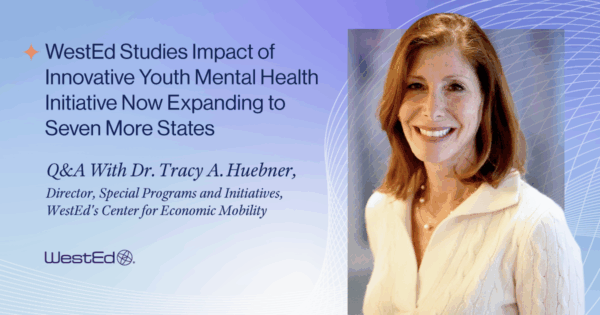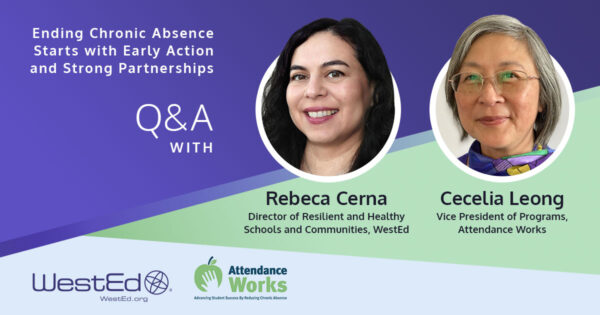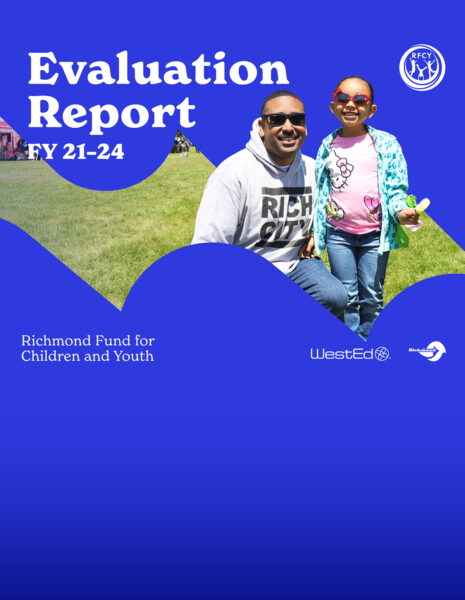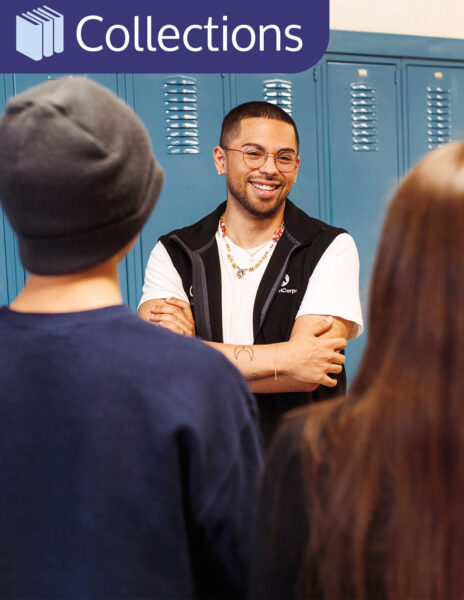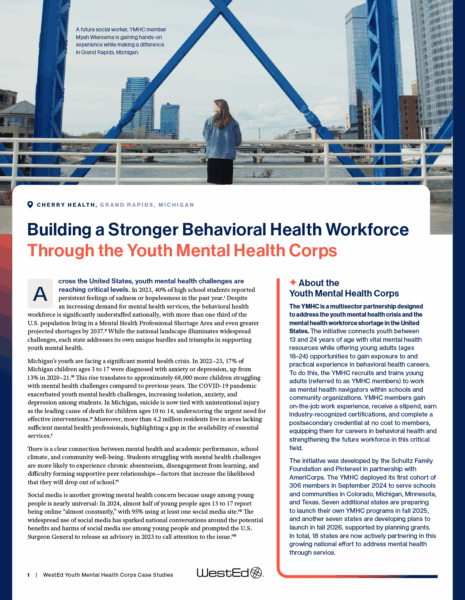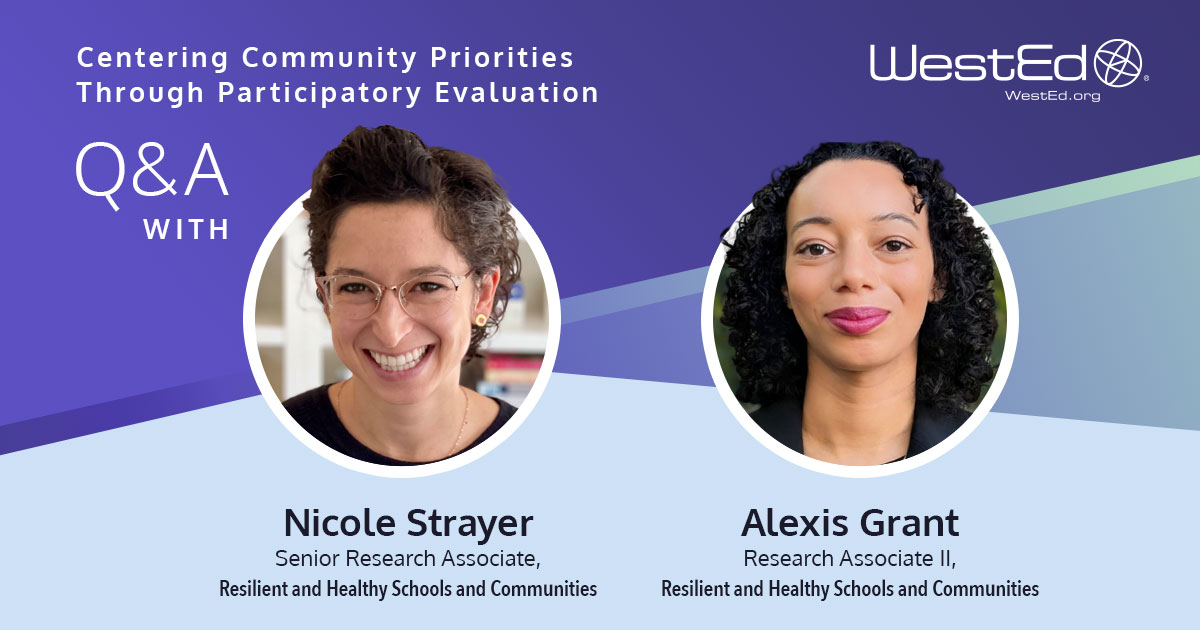
November 6, 2025
Local municipalities are increasingly dedicating taxpayer dollars to programs that serve children and youths. Communities expect these investments to deliver results, and they want evidence that programs are making a difference. Place-based, participatory evaluations are essential in meeting that expectation because they provide insight not only into outcomes but also into how programs are implemented and experienced by young people and families.
The Richmond Fund for Children and Youth (RFCY), established by the Richmond Kids First Initiative, has become a powerful example of how local funding and participatory evaluation can strengthen entire systems of support for children, youths, and families. Between 2021 and 2024, the RFCY invested over $9 million in programs spanning mental health, education, out-of-school enrichment, youth violence prevention, and access to basic needs.
To ensure these investments are driving meaningful impact, WestEd is conducting a multiyear evaluation that examines program reach, quality, outcomes, and challenges. Project Directors Nicole Tirado-Strayer and Alexis Grant of WestEd’s Resilient and Healthy Schools and Communities team are leading the 5-year participatory evaluation while providing technical assistance to strengthen grantees’ evaluation capacity.
Nicole: The key benefits of using a participatory evaluation approach center on recognizing the uniqueness of each community we serve. While we maintain methodological rigor in our evaluation work, we also understand that community members may have different priorities and perspectives and we need to communicate in ways that resonate with them.
When we start as listeners and learners, we can partner with the people being served and supported by these initiatives to design evaluation methodologies that yield information that is more authentic to their experience. The resulting data are not only more valid but also more aligned with the community’s actual interests and needs.
Alexis: A participatory approach can also strengthen the capacity of all the people you’re working with. There might be a technical assistance component for evaluation partners or a component where you’re teaching community members how to administer surveys. When community members learn to collect, analyze, and discuss data, this supports continuous improvement during the evaluation while also equipping them with skills they can continue using long after the evaluation ends.
Alexis: One of the defining features of a participatory approach is recognizing that people with lived experience are best positioned to speak to it. In evaluations of child- and youth-serving initiatives, this means creating opportunities for young people to participate in deciding what’s important to them—what should be measured, what questions should be asked, what reports should look like, and who should be consulted.
Too often, we underestimate young people’s ability to reflect on the world around them and their experiences. But because of their unique perspectives, particularly for evaluations of child- and youth-serving initiatives, it’s both important and rewarding to include young people in the work. Including youths in this process might look like youth councils or advisory groups where they’re not just providing information but also giving direction on what evaluators should ask of service providers, funders, and program leaders.
Nicole: In our work, we often see limited capacity and funding for community engagement, yet there’s strong interest from the broader community in understanding youth voice and connection. Sometimes that limited capacity makes it difficult to organize and convene young people, and we see this as a real missed opportunity.
Using a one-time engagement approach will not yield the same impact as convening a consistent group, building relational trust, and treating young people as partners throughout the evaluation, which provides insights that organizations wouldn’t have otherwise. We see this consistently across our youth engagement sessions.
For example, in our final report, we included a series of maps generated from grantee data showing program locations across the city. We printed these maps and brought them to our youth co-evaluators group.
While we typically think of equity in terms of age, race, ethnicity, or gender, the young people raised a different question: Are programs accessible by public transit, or do they require difficult uphill walks from bus stops? As people who drive and don’t live in the community, we hadn’t considered this. We incorporated their feedback by adding bus routes to our maps, strengthening our analysis of site accessibility across the city.
Alexis: We were fortunate to have the funder support and budget to include youths as key partners in the evaluation. We recruited our co-evaluators by asking RFCY-funded programs to nominate participants who would be good candidates for engaging with us over the course of a year or longer. We now have a group of 14 youths ages 15 to 20 who meet with us virtually or in person every other month, and their role has evolved throughout the evaluation.
During our planning stage, the co-evaluators helped us finalize questions for the youth experience survey, which is now administered across all funded programs. Now, in full implementation, we continue meeting with co-evaluators to share data, solicit their feedback, and use their input to guide our reporting.
Our team thinks carefully about what we can give back to these young people, so we also focus on building their capacity as researchers and providing experiences they can translate into resume content. For example, this year we will be presenting at the American Evaluation Association conference with a young person from our Richmond youth co-evaluator team. We look for opportunities to expose them to public speaking at city council meetings, oversight boards, and committees and to have them visit professional environments they might otherwise not access.
We also address practical needs: providing food at every in-person meeting, offering financial incentives as tokens of appreciation for their time, and covering transportation costs. There are many considerations that need to go into this model. As evaluators grappling with power dynamics, we find it easy to slip into an extractive approach because young people are so brilliant and have so much to offer, but it’s critical to step back and ask, “What can we offer them as well?”
Nicole: One of the most effective ways regional departments can collaborate with community-based organizations (CBOs) is by embedding independent evaluation into initiatives. When departments and CBOs bring in evaluators who are outside of the funder–grantee relationship, it creates a safe space for youths, families, and organizations to provide confidential and honest feedback. This helps both departments and CBOs identify what’s working and where service gaps remain and then use that information to make joint improvements.
Collaboration also benefits from clear priorities and accountability structures, often guided by legislation. Communities want to know how tax dollars are being spent and which youth populations are being served. By working with CBOs and evaluators, departments can use a range of methods to show whether and how funds are actually reaching the intended populations and what is the impact. These evaluation methods become much more meaningful when paired with the local knowledge CBOs bring that numbers alone can’t capture.
Departments and CBOs should also engage in regular public forums and participatory processes together. Data may suggest one set of priorities, but community members can highlight different or emerging needs. Because youth priorities change over time, especially during crises like the pandemic or natural disasters, ongoing collaboration ensures that both funding decisions and program locations adapt to what communities need most.
Alexis: What’s worked really well is approaching this as a true partnership. We spent time up front building a shared vision and listening to our client’s goals for the fund. That trust has made it easier to have honest conversations, even when we have different priorities or viewpoints, because we know we’re working toward the same goal.
Nicole: Over the last 3 years, one of the biggest lessons for us has been recognizing that we’re not the experts in the room—the client is. And that’s something we deeply respect. They’re clear about their vision, and when we miss the mark, they push us to adjust. Instead of seeing that as failure, we see it as an opportunity to listen for understanding and do better together. It’s been such a collaborative process—bringing our skills to the table while honoring their deep expertise. That learner’s stance has made this partnership really meaningful, and I think it’s why the work has been so strong and rewarding.
Every organization’s context is unique, and the most effective evaluation approach is one that is responsive to local needs while being grounded in strong research practices. WestEd’s recognized expertise in participatory evaluation helps grantees and agencies build authentic community voice into their work, strengthen program quality, and demonstrate meaningful impact.
If you are interested in exploring how participatory evaluation can support your program or initiative, contact us to learn more.


